- Home
- Ursula K. Le Guin
The Wind's Twelve Quarters
The Wind's Twelve Quarters Read online
CONTENTS
Foreword
Semley’s Necklace
April in Paris
The Masters
Darkness Box
The Word of Unbinding
The Rule of Names
Winter’s King
The Good Trip
Nine Lives
Things
A Trip to the Head
Vaster than Empires and More Slow
The Stars Below
The Field of Vision
Direction of the Road
The Ones Who Walk Away From Omelas
The Day Before the Revolution
About the Author
Praise
Also by Ursula K. Le Guin
Back Ads
Copyright
About the Publisher
FOREWORD
This collection is what painters call a retrospective; it gives a roughly chronological survey of my short stories during the first ten years after I broke into print, belated but undaunted, at the age of thirty-two. They appear here very roughly in the order in which they were written, so that the development of the artist may become part of the interest of the book. I have not been rigid about the chronology (it is impossible; stories may be written in one year, not published until two or three years later, and then possibly revised, and which date do you use?) but there are no severe displacements.
It is by no means a complete collection of my stories. One early story is left out because I don’t much like it; fiction which doesn’t fit under the headings Fantasy or Science Fiction is not included; and most of my stories published in the last few years are not in this book, because the anthologies in which they first appeared are still in print. The last two in the volume, however, appeared in 1973 and 1974, so the seventeen stories do cover the last ten or a dozen years.
The relation between short story and novel, inside the writer’s head, is interesting. “Semley’s Necklace,” though a complete story in itself, was the germ of a novel. I had done with Semley when I finished it, but there was a minor character, a mere by-stander, who did not sink back obediently into obscurity when the story was done, but who kept nagging me. “Write my story,” he said. “I’m Rocannon. I want to explore my world. . . .” So I obeyed him. You really can’t argue with these people.
“Winter’s King” was another such germinal story, and so were “The Word of Unbinding” and “The Rule of Names,” though all of them gave me the place, rather than the person, for the novels to come. The last story in the book is not a germinal but an autumnal one. It came after the novel, a final gift, received with thanksgiving.
Most of the straight narrative stories in this volume are in fact connected with my novels, in that they fit more or less well into the rather erratic “future history” scheme which all my science fiction books follow. Those that don’t fit in are the early fantasies, and then later the ones I call psychomyths, more or less sur-realistic tales, which share with fantasy the quality of taking place outside any history, outside of time, in that region of the living mind which—without invoking any consideration of immortality—seems to be without spatial or temporal limits at all.
Collectors might want to know that the titles used in this volume are my own choice, in some cases varying from previous publications:
“Semley’s Necklace” first appeared as “Dowry of the Angyar” (a grammatical error by the editor, who didn’t speak Angyo fluently);
“Things” appeared as “The End”;
“The Field of Vision” appeared as “Field of Vision.”
The only stories that have been revised, beyond an occasional one-word or one-sentence change and restitution of cuts and errors in the published versions, are:
“Winter’s King” (see note to the story);
“Vaster than Empires and More Slow” (a cut in the first pages);
“Nine Lives” (see note to the story).
SEMLEY’S NECKLACE
This story, written in 1963, published as “Dowry of the Angyar” in 1964 and as the Prologue of my first novel, Rocannon’s World, in 1966, was actually the eighth story I got printed; but it opens the book because I think it’s the most characteristic of my early science fiction and fantasy works, the most romantic of them all. The progress of my style has been away from open romanticism, slowly and steadily, from this story to the last one in the volume, written in 1972. It has been a progress. I am still a romantic, no doubt about that, and glad of it, but the candor and simplicity of “Semley’s Necklace” have gradually become something harder, stronger, and more complex.
How can you tell the legend from the fact on these worlds that lie so many years away?—planets without names, called by their people simply The World, planets without history, where the past is the matter of myth, and a returning explorer finds his own doings of a few years back have become the gestures of a god. Unreason darkens that gap of time bridged by our lightspeed ships, and in the darkness uncertainty and disproportion grow like weeds.
In trying to tell the story of a man, an ordinary League scientist, who went to such a nameless half-known world not many years ago, one feels like an archaeologist amid millennial ruins, now struggling through choked tangles of leaf, flower, branch and vine to the sudden bright geometry of a wheel or a polished cornerstone, and now entering some commonplace, sunlit doorway to find inside it the darkness, the impossible flicker of a flame, the glitter of a jewel, the half-glimpsed movement of a woman’s arm.
How can you tell fact from legend, truth from truth?
Through Rocannon’s story the jewel, the blue glitter seen briefly, returns. With it let us begin, here:
Galactic Area 8, No. 62: FOMALHAUT II.
High-Intelligence Life Forms: Species Contacted:
Species I.
A. Gdemiar (singular Gdem): Highly intelligent, fully hominoid nocturnal troglodytes, 120–135 cm, in height, light skin, dark head-hair. When contacted these cave-dwellers possessed a rigidly stratified oligarchic urban society modified by partial colonial telepathy, and a technologically oriented Early Steel culture. Technology enhanced to Industrial, Point C, during League Mission of 252—254. In 254 an Automatic Drive ship (to-from New South Georgia) was presented to oligarchs of the Kiriensea Area community. Status C-Prime.
B. Fiia (singular Fian): Highly intelligent, fully hominoid, diurnal, av. ca. 130 cm. in height, observed individuals generally light in skin and hair. Brief contacts indicated village and nomadic communal societies, partial colonial telepathy, also some indication of short-range TK. The race appears a-technological and evasive, with minimal and fluid culture-patterns. Currently untaxable. Status E-Query.
Species II.
Liuar (singular Liu): Highly intelligent, fully hominoid, diurnal, av. height above 170 cm., this species possesses a fortress/village, clan-descent society, a blocked technology (Bronze), and feudal-heroic culture. Note horizontal social cleavage into 2 pseudo-races: (a) Olgyior, “midmen,” light-skinned and dark-haired; (b) Angyar, “lords,” very tall, dark-skinned, yellow-haired—
“That’s her,” said Rocannon, looking up from the Abridged Handy Pocket Guide to Intelligent Life-forms at the very tall, dark-skinned, yellow-haired woman who stood halfway down the long museum hall. She stood still and erect, crowned with bright hair, gazing at something in a display case. Around her fidgeted four uneasy and unattractive dwarves.
“I didn’t know Fomalhaut II had all those people besides the trogs,” said Ketho, the curator.
“I didn’t either. There are even some ‘Unconfirmed’ species listed here, that they never contacted. Sounds like time for a more thorough survey mission to the place. Well, now at least we know what she is.”
“I wish there were some way of knowing who she is. . . .”
She was of an ancient family, a descendant of the first kings of the Angyar, and for all her poverty her hair shone with the pure, steadfast gold of her inheritance. The little people, the Fiia, bowed when she passed them, even when she was a barefoot child running in the fields, the light and fiery comet of her hair brightening the troubled winds of Kirien.
She was still very young when Durhal of Hallan saw her, courted her, and carried her away from the ruined towers and windy halls of her childhood to his own high home. In Hallan on the mountainside there was no comfort either, though splendor endured. The windows were unglassed, the stone floors bare; in coldyear one might wake to see the night’s snow in long, low drifts beneath each window. Durhal’s bride stood with narrow bare feet on the snowy floor, braiding up the fire of her hair and laughing at her young husband in the silver mirror that hung in their room. That mirror, and his mother’s bridal-gown sewn with a thousand tiny crystals, were all his wealth. Some of his lesser kinfolk of Hallan still possessed wardrobes of brocaded clothing, furniture of gilded wood, silver harness for their steeds, armor and silver mounted swords, jewels and jewelry—and on these last Durhal’s bride looked enviously, glancing back at a gemmed coronet or a golden brooch even when the wearer of the ornament stood aside to let her pass, deferent to her birth and marriage-rank.
Fourth from the High Seat of Hallan Revel sat Durhal and his bride Semley, so close to Hallanlord that the old man often poured wine for Semley with his own hand, and spoke of hunting with his nephew and heir Durhal, looking on the young pair with a grim, unhopeful love. Hope came hard to the Angyar of Hallan and all the Western Lands, since the Starlords had appeared with their houses that leaped about on pillars of fire and their awful weapons that could level hills. They had interfered with all the old ways and wars, and though the sums were small there was terrible shame to the Angyar in having to pay a tax to them, a tribute for the Starlords’ war that was to be fought with some strange enemy, somewhere in the hollow places between the stars, at the end of years. “It will be your war too,” they said, but for a generation now the Angyar had sat in idle shame in their revel-halls, watching their double swords rust, their sons grow up without ever striking a blow in battle, their daughters marry poor men, even midmen, having no dowry of heroic loot to bring a noble husband. Hallanlord’s face was bleak when he watched the fair-haired couple and heard their laughter as they drank bitter wine and joked together in the cold, ruinous, resplendent fortress of their race.
Semley’s own face hardened when she looked down the hall and saw, in seats far below hers, even down among the halfbreeds and the midmen, against white skins and black hair, the gleam and flash of precious stones. She herself had brought nothing in dowry to her husband, not even a silver hairpin. The dress of a thousand crystals she had put away in a chest for the wedding-day of her daughter, if daughter it was to be.
It was, and they called her Haldre, and when the fuzz on her little brown skull grew longer it shone with steadfast gold, the inheritance of the lordly generations, the only gold she would ever possess. . . .
Semley did not speak to her husband of her discontent. For all his gentleness to her, Durhal in his pride had only contempt for envy, for vain wishing, and she dreaded his contempt. But she spoke to Durhal’s sister Durossa.
“My family had a great treasure once,” she said. “It was a necklace all of gold, with the blue jewel set in the center—sapphire?”
Durossa shook her head, smiling, not sure of the name either. It was late in warmyear, as these Northern Angyar called the summer of the eight-hundred-day year, beginning the cycle of months anew at each equinox; to Semley it seemed an outlandish calendar, a midmannish reckoning. Her family was at an end, but it had been older and purer than the race of any of these northwestern marchlanders, who mixed too freely with the Olgyior. She sat with Durossa in the sunlight on a stone windowseat high up in the Great Tower, where the older woman’s apartment was. Widowed young, childless, Durossa had been given in second marriage to Hallanlord, who was her father’s brother. Since it was a kinmarriage and a second marriage on both sides she had not taken the title of Hallanlady, which Semley would some day bear; but she sat with the old lord in the High Seat and ruled with him his domains. Older than her brother Durhal, she was fond of his young wife, and delighted in the bright-haired baby Haldre.
“It was bought,” Semley went on, “with all the money my forebear Leynen got when he conquered the Southern Fiefs—all the money from a whole kingdom, think of it, for one jewel! Oh, it would outshine anything here in Hallan, surely, even those crystals like koob-eggs your cousin Issar wears. It was so beautiful they gave it a name of its own; they called it the Eye of the Sea. My great-grandmother wore it.”
“You never saw it?” the older woman asked lazily, gazing down at the green mountainslopes where long, long summer sent its hot and restless winds straying among the forests and whirling down white roads to the seacoast far away.
“It was lost before I was born.”
“No, my father said it was stolen before the Starlords ever came to our realm. He wouldn’t talk of it, but there was an old midwoman full of tales who always told me the Fiia would know where it was.”
“Ah, the Fiia I should like to see!” said Durossa. “They’re in so many songs and tales; why do they never come to the Western Lands?”
“Too high, too cold in winter, I think. They like the sunlight of the valleys of the south.”
“Are they like the Clayfolk?”
“Those I’ve never seen; they keep away from us in the south. Aren’t they white like midmen, and misformed? The Fiia are fair; they look like children, only thinner, and wiser. Oh, I wonder if they know where the necklace is, who stole it and where he hid it! Think, Durossa—if I could come into Hallan Revel and sit down by my husband with the wealth of a kingdom round my neck, and outshine the other women as he outshines all men!”
Durossa bent her head above the baby, who sat studying her own brown toes on a fur rug between her mother and aunt. “Semley is foolish,” she murmured to the baby; “Semley who shines like a falling star, Semley whose husband loves no gold but the gold of her hair. . . .”
And Semley, looking out over the green slopes of summer toward the distant sea, was silent.
But when another coldyear had passed, and the Starlords had come again to collect their taxes for the war against the world’s end—this time using a couple of dwarfish Clayfolk as interpreters, and so leaving all the Angyar humiliated to the point of rebellion—and another warmyear too was gone, and Haldre had grown into a lovely, chattering child, Semley brought her one morning to Durossa’s sunlit room in the tower. Semley wore an old cloak of blue, and the hood covered her hair.
“Keep Haldre for me these few days, Durossa,” she said, quick and calm. “I’m going south to Kirien.”
“To see your father?”
“To find my inheritance. Your cousins of Harget Fief have been taunting Durhal. Even that halfbreed Parna can torment him, because Parna’s wife has a satin coverlet for her bed, and a diamond earring, and three gowns, the dough-faced black-haired trollop! while Durhal’s wife must patch her gown—”
“Is Durhal’s pride in his wife, or what she wears?”
But Semley was not to be moved. “The Lords of Hallan are becoming poor men in their own hall. I am going to bring my dowry to my lord, as one of my lineage should.”
“Semley! Does Durhal know you’re going?”
“My return will be a happy one—that much let him know,” said young Semley, breaking for a moment into her joyful laugh; then she bent to kiss her daughter, turned, and before Durossa could speak, was gone like a quick wind over the floors of sunlit stone.
Married women of the Angyar never rode for sport, and Semley had not been from Hallan since her marriage; so now, mounting the high saddle of a windsteed, she felt like a girl again, like the wi
ld maiden she had been, riding half-broken steeds on the north wind over the fields of Kirien. The beast that bore her now down from the hills of Hallan was of finer breed, striped coat fitting sleek over hollow, buoyant bones, green eyes slitted against the wind, light and mighty wings sweeping up and down to either side of Semley, revealing and hiding, revealing and hiding the clouds above her and the hills below.
On the third morning she came to Kirien and stood again in the ruined courts. Her father had been drinking all night, and, just as in the old days, the morning sunlight poking through his fallen ceilings annoyed him, and the sight of his daughter only increased his annoyance. “What are you back for?” he growled, his swollen eyes glancing at her and away. The fiery hair of his youth was quenched, grey strands tangled on his skull. “Did the young Halla not marry you, and you’ve come sneaking home?”
“I am Durhal’s wife. I came to get my dowry, father.”
The drunkard growled in disgust; but she laughed at him so gently that he had to look at her again, wincing.
“Is it true, father, that the Fiia stole the necklace Eye of the Sea?”
“How do I know? Old tales. The thing was lost before I was born, I think. I wish I never had been. Ask the Fiia if you want to know. Go to them, go back to your husband. Leave me alone here. There’s no room at Kirien for girls and gold and all the rest of the story. The story’s over here; this is the fallen place, this is the empty hall. The sons of Leynen all are dead, their treasures are all lost. Go on your way, girl.”
Grey and swollen as the web-spinner of ruined houses, he turned and went blundering toward the cellars where he hid from daylight.
Leading the striped windsteed of Hallan, Semley left her old home and walked down the steep hill, past the village of the midmen, who greeted her with sullen respect, on over fields and pastures where the great, wing-clipped, half-wild herilor grazed, to a valley that was green as a painted bowl and full to the brim with sunlight. In the deep of the valley lay the village of the Fiia, and as she descended leading her steed the little, slight people ran up toward her from their huts and gardens, laughing, calling out in faint, thin voices.

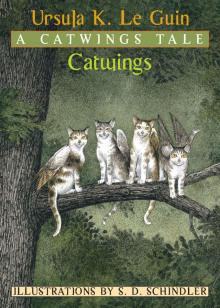 Catwings
Catwings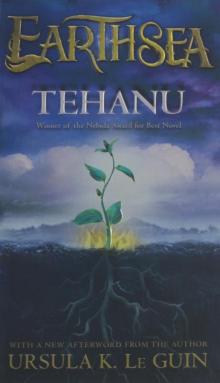 Tehanu
Tehanu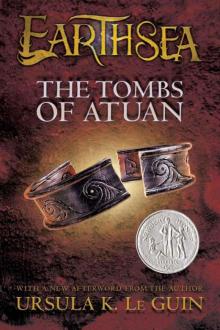 The Tombs of Atuan
The Tombs of Atuan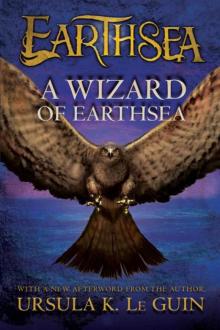 A Wizard of Earthsea
A Wizard of Earthsea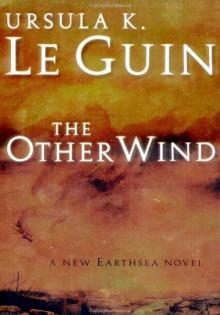 The Other Wind
The Other Wind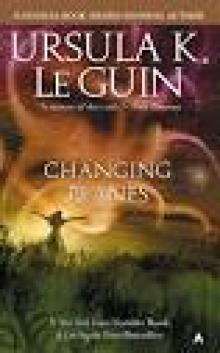 Ursula K. Le Guin
Ursula K. Le Guin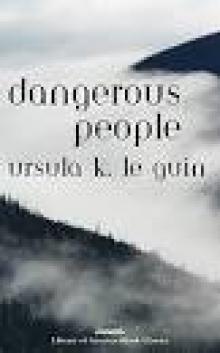 Dangerous People
Dangerous People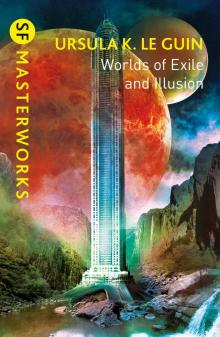 Worlds of Exile and Illusion: Rocannon's World, Planet of Exile, City of Illusions
Worlds of Exile and Illusion: Rocannon's World, Planet of Exile, City of Illusions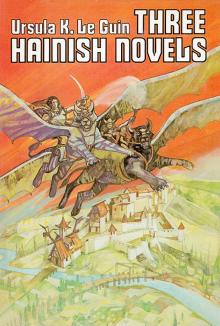 Three Hainish Novels
Three Hainish Novels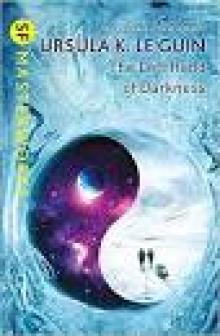 The Left Hand Of Darkness (SF Masterworks)
The Left Hand Of Darkness (SF Masterworks)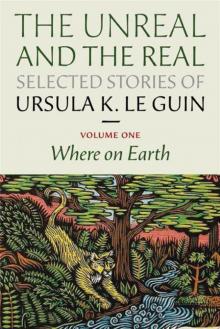 The Unreal and the Real - Vol 1 - Where On Earth
The Unreal and the Real - Vol 1 - Where On Earth The Visionary
The Visionary The Ones Who Walk Away from Omelas
The Ones Who Walk Away from Omelas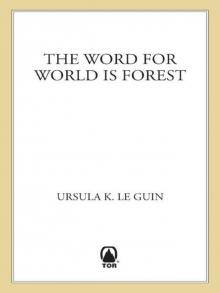 The Word for World is Forest
The Word for World is Forest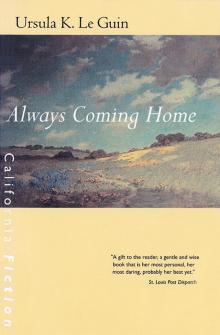 Always Coming Home
Always Coming Home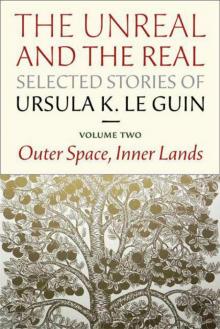 The Unreal and the Real - Vol 2 - Outer Space, Inner Lands
The Unreal and the Real - Vol 2 - Outer Space, Inner Lands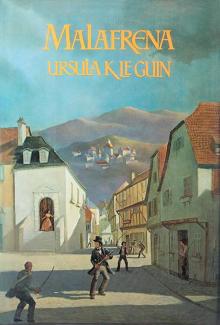 Malafrena
Malafrena The Lathe of Heaven
The Lathe of Heaven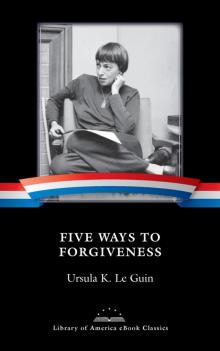 Five Ways to Forgiveness
Five Ways to Forgiveness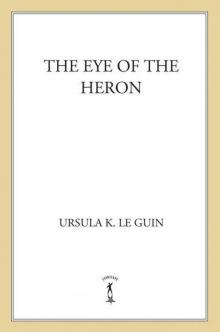 The Eye of the Heron
The Eye of the Heron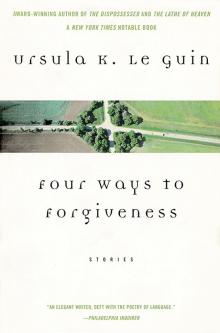 Four Ways to Forgiveness
Four Ways to Forgiveness Powers
Powers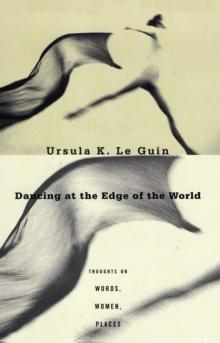 Dancing at the Edge of the World
Dancing at the Edge of the World Very Far Away from Anywhere Else
Very Far Away from Anywhere Else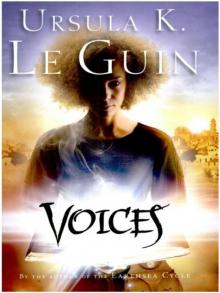 Voices aotws-2
Voices aotws-2 The New Atlantis
The New Atlantis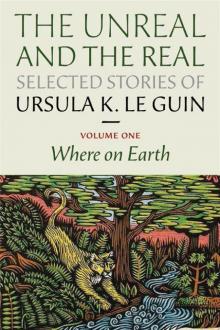 The Unreal and the Real, Selected Stories of Ursula K. Le Guin Volume 1: Where on Earth
The Unreal and the Real, Selected Stories of Ursula K. Le Guin Volume 1: Where on Earth The Telling
The Telling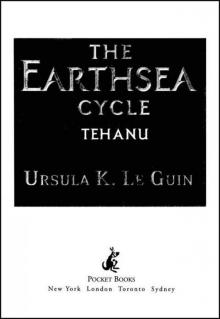 Tehanu (Earthsea Cycle)
Tehanu (Earthsea Cycle) Nine Lives twtq-9
Nine Lives twtq-9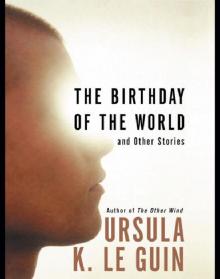 The Birthday of the World and Other Stories
The Birthday of the World and Other Stories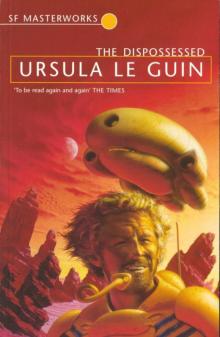 The Dispossessed
The Dispossessed Changing Planes
Changing Planes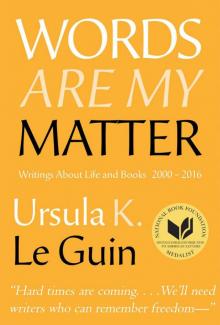 Words Are My Matter
Words Are My Matter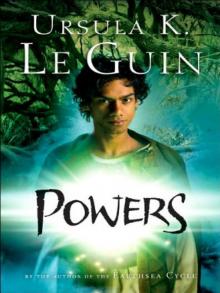 Powers aotws-3
Powers aotws-3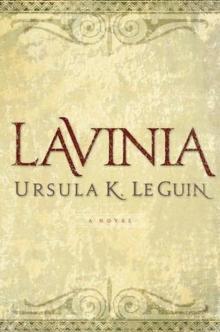 Lavinia
Lavinia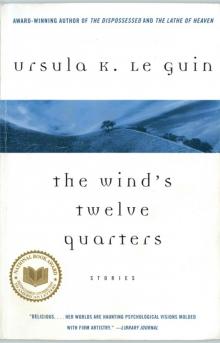 The Wind's Twelve Quarters
The Wind's Twelve Quarters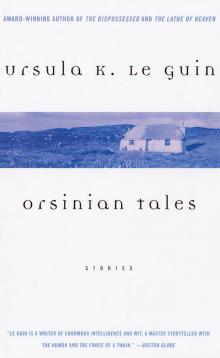 Orsinian Tales
Orsinian Tales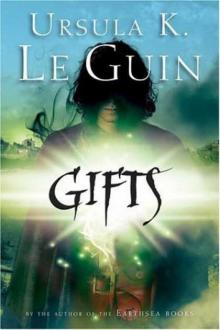 Gifts aotws-1
Gifts aotws-1 Coming of Age in Karhide
Coming of Age in Karhide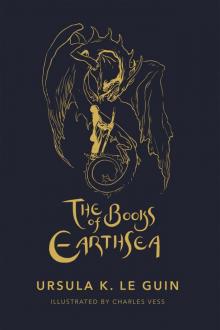 The Books of Earthsea: The Complete Illustrated Edition
The Books of Earthsea: The Complete Illustrated Edition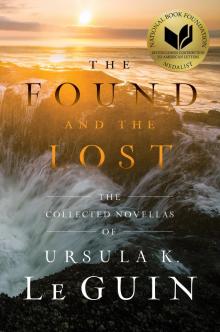 The Found and the Lost
The Found and the Lost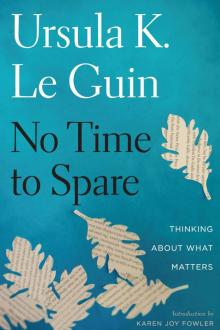 No Time to Spare
No Time to Spare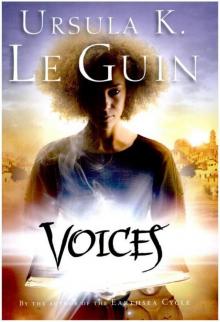 Voices
Voices The Wild Girls
The Wild Girls Old Music and the Slave Women
Old Music and the Slave Women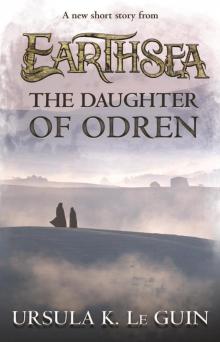 The Daughter of Odren
The Daughter of Odren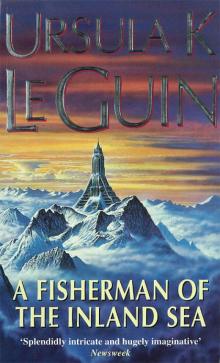 A Fisherman of the Inland Sea: Stories
A Fisherman of the Inland Sea: Stories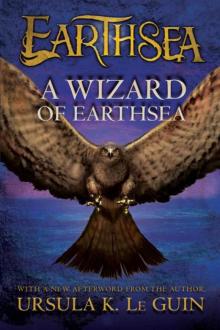 A Wizard of Earthsea (The Earthsea Cycle)
A Wizard of Earthsea (The Earthsea Cycle)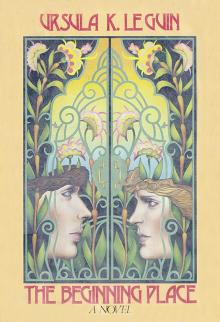 The Beginning Place
The Beginning Place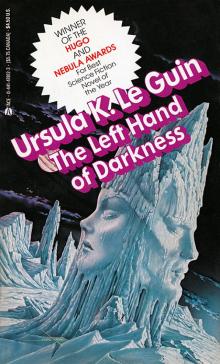 The Left Hand of Darkness
The Left Hand of Darkness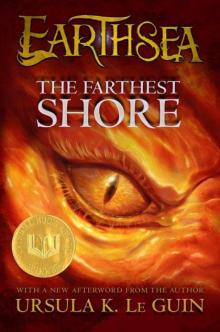 The Farthest Shore (Earthsea Cycle)
The Farthest Shore (Earthsea Cycle)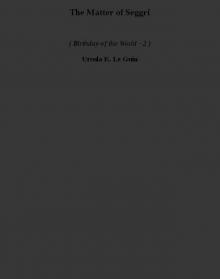 The Matter of Seggri botw-2
The Matter of Seggri botw-2